Underground mining is a complex and challenging process requiring specialized equipment to harvest precious minerals and commodities from under the earth’s surface. Drills, loaders, conveyors, and haul trucks are standard underground mining equipment, as are specialist devices such as longwall mining machines and continuous miners.
This article will discuss some of the mining equipment types and discuss how they work. We will also examine how sophisticated technologies and advances in underground mining equipment, the underground mining equipment market and autonomous technology enhance safety and efficiency. This article will be a helpful resource for those who want to learn more about the equipment and processes used in the underground mining sector.
Underground Mining Industry
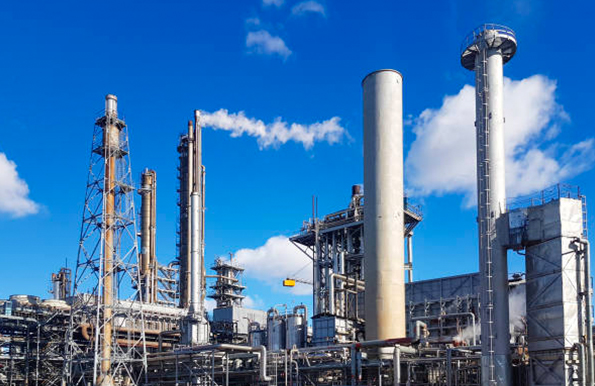
Underground mining is extracting precious minerals or other geological elements from the soil through tunnels or shafts dug into the ground. When the mineral or resource being sought is situated at a depth that is too deep for surface mining procedures, this form of mining is used.
Underground mining is responsible for extracting several minerals, including coal, precious metals, and industrial minerals. Underground techniques include room and pillar mining, longwall mining, and sub-level caving.
Each approach has advantages and disadvantages, and the method used will be determined by the unique features of the deposit being mined. One of the most severe difficulties confronting the underground mining sector is reducing mining’s environmental impact.
This includes decreasing the quantity of waste rock and tailings generated and controlling the mine’s water and air quality. Furthermore, underground mining is hazardous and necessitates strong safety precautions to protect miners.
Despite these obstacles, the underground mining industry continues to play an essential part in the global economy by producing raw materials for various goods ranging from power to automobiles.
Different Fields in the Mining Industry
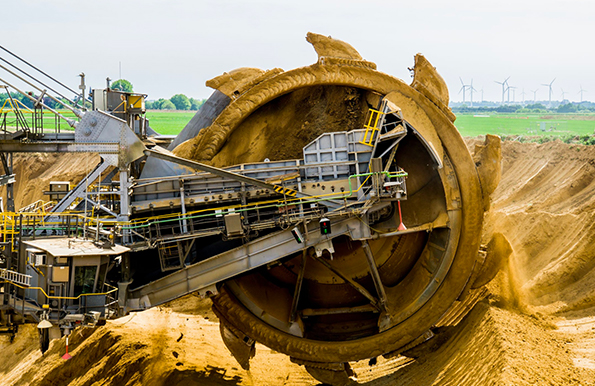
The two major types of mining are surface mining and underground mining. Surface mining extracts minerals at the earth’s surface, but subterranean mining extracts minerals that cannot be extracted using surface mining processes.
The type of minerals a mining company is attempting to extract and the mining procedures used to obtain those minerals directly influence the miners’ tools in their work. For example, surface mining techniques like strip mining, open-pit mining, and quarrying necessitate heavy equipment like excavators and bulldozers.
In contrast, underground techniques like longwall mining and shrinkage stope mining require specialized equipment like shearers and underground drilling machines. Surface and subsurface mining operations are conducted in three stages: extraction, material handling, and material processing.
Extraction is the process of digging, drilling, or blasting into the earth to obtain minerals. Material handling entails sorting through resources, transporting target minerals to a processing location, and discarding irrelevant materials.
Material processing transforms minerals into finished goods for distribution by melting, crushing, grinding, or refining them. The mining industry is vital in providing raw materials for various products, from construction materials to technological equipment. The mining industry is a critical component of the global economy, giving jobs and money to millions of people worldwide.
Surface Mining
Minerals can also be extracted from the earth’s surface through a process known as surface mining. As a result of its ability to facilitate the extraction of minerals that would otherwise be difficult or impossible to get through underground mining technologies, it is a frequent mining technology.
Mining on the surface can be carried out in several ways, such as strip mining, open-pit mining, quarrying, in-situ leach known as ISL, and placer mining. Each of these strategies has benefits and drawbacks.
Removing thin layers of surface material to access underlying mineral deposits is known as strip mining. Coal extraction from areas close to the surface frequently uses this technology.
Explosives are placed in the ground using open-pit mining, which involves digging into the planet’s surface. The explosions create a large pit that provides miners access to the rocks beneath the surface. This method is capable of extracting a variety of minerals, including silver.
Quarrying is the procedure through which miners carve hard stone blocks. Miners will also remove byproducts such as gravel, sand, or small rocks from these hard stones. This method is typically used to extract the granite, marble, and other hard stones.
In-situ leach (ISL) mining is generally used to extract uranium, which is used in nuclear power plants. This method involves dissolving the mineral without moving rock from the surface layers.
Placer mining is a technique that uses pans and water to recover gold from sand or gravel. This strategy is based on the notion that gold has a higher density than sand and gravel and will sink faster, making it easier to gather.
Moreover, each method has advantages and disadvantages, and the choice will depend on the specific characteristics of the mined deposit. Surface mining is an essential part of the mining industry that plays a crucial role in supplying the raw materials needed for a wide range of products.
Underground Mining
Underground mining is a means of getting minerals that surface mining techniques cannot. The extraction procedure differs from surface mining due to the constrained nature of underground mining.
Underground mining techniques include blast mining, room and pillar mining, block caving, retreat mining, drift and fill mining, cut and fill mining, longwall mining, shrinkage stope mining, and sublevel caving.
Explosives are used in blast mining to remove complex rock layers, loosen rocks, and open up underground mining sites. Room and pillar mining entails building rectangular pillars to support the weight of the ceiling while miners extract minerals from around the pillars.
Specialized underground mining machinery may perform this approach. Removing the pillars from the room and pillar mining is known as retreat mining. This method strategically removes the pillars, allowing the remaining ore to be extracted from the mine. The mine collapses in on itself as the pillars are removed.
It is an extremely risky underground mining procedure, and the pillar removal process is meticulously planned to avoid injury and death.
Block caving is a large-scale mining method that takes more time to develop than any other underground mining method. Cut and fill mining is a small-scale technique involving horizontal cuts in the orebody. When an orebody is wider than the drift, drift and fill mining is performed. Longwall mining is a type of coal mining that uses a shearer mounted on a kilometre-long track to crush coal off the mine face.
Types of Mining Methods
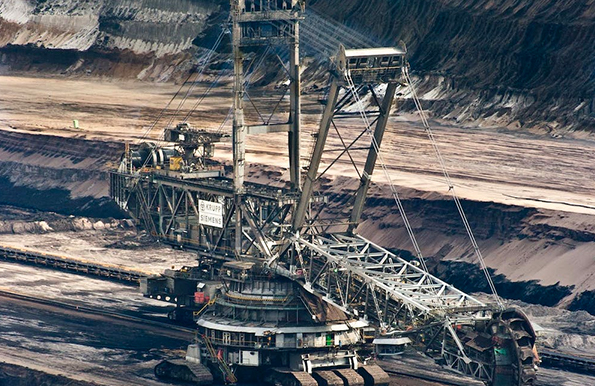
The mining industry is a vital sector that plays an important role in providing the raw materials that are essential for the production of a wide range of products. There are two major types of mining, surface mining and underground mining. Surface mining is used to extract minerals close to the earth’s surface, while underground mining is used to extract minerals that cannot be extracted by surface mining techniques.
In both types of mining, industrial valves play a critical role in ensuring the safety and efficiency of the mining process. Industrial valves control the flow of fluids and gases throughout the mining process, from extracting the minerals to processing them. They are used in a variety of applications, including slurry control, pressure control, and flow control.
Slurry control is one of the most important applications of industrial valves in the mining industry. The slurry is a mixture of water and solids used to transport minerals from the mine to the processing plant. Industrial valves control the flow of slurry, ensuring that it is transported safely and efficiently.
Another important application of industrial valves in the mining industry is pressure control. High-pressure systems are used to extract minerals from the earth, and industrial valves are used to control the pressure and ensure the safety of the mining process.
Finally, industrial valves are used in flow control applications, where they are used to control the flow of fluids and gases throughout the mining process. This helps to ensure that the mining process is efficient and that the minerals are extracted and processed safely.
Surface Mining Equipment
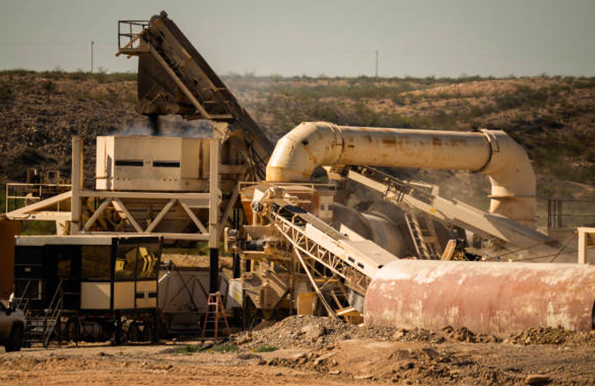
Heavy gear used to harvest minerals and other resources from the earth’s surface is referred to as surface mining equipment. Coal, iron ore, gold, and other non-metallic minerals are commonly extracted using this mining method.
Blasthole drills, shovels, bucket-wheel excavators, dragline excavators, graders, high-wall miners, dozers, mining trucks, and wheel tractor scrapers are examples of surface mining equipment.
Industrial valves are crucial in the operation of surface mining equipment. These valves control the flow of fluids like water, air, and oil throughout the mining process. For example, industrial valves control the flow of water to cool and lubricate drilling equipment.
They are also used to control the flow of air to operate pneumatic tools and the flow of oil to lubricate and cool motors. Valves in surface mining equipment are significant because they allow operators to control the flow of fluids and gases throughout the mining operation.
It improves the efficiency and safety of the mining operation by allowing for precise control over material movement and fluid flow.
Moreover, surface mining equipment, on the other hand, includes:
- Blasthole drills make room for explosives to break apart rock and harvest rich minerals by drilling holes in the earth’s surface.
- Bucket-wheel excavators are big devices that scoop up and carry massive amounts of material using a rotating wheel with buckets.
- Dozers are heavy-duty bulldozers that clear terrain and prepare it for mining activities.
- Dragline excavators are enormous machines that excavate and carry materials using a wire rope and pulley system.
- Graders are used to levelling and smoothing the earth’s surface before and after mining activities.
- Highwall miners are specialist machines that extract coal from the earth’s surface using a cutting head.
- Mining trucks are big, heavy-duty vehicles transporting extracted materials from the mining site.
- Shovels are used for digging and scooping up earth and rock materials.
- Wheel tractor scrapers are enormous equipment used to move and level large amounts of earth and rock.
These pieces of equipment are used in many types of surface mining, including strip mining, open-pit mining, and mountaintop removal mining.
Underground Mining Equipment
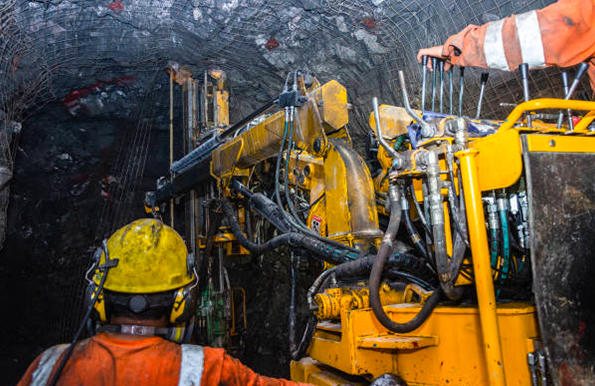
The heavy machines and vehicles used to collect minerals and other resources beneath the earth’s surface are underground mining equipment. Crane lifts, continuous miners, drones, jumbo drills, longwall mining equipment loaders and haulers, personnel vehicles, rock dusters, refuge chambers, roof bolters, shotcrete machines, scoops, shuttle cars, underground trains, and ventilation systems are examples of mining gear.
This machinery and vehicles extract minerals and other resources from underground mines and transport them. Industrial valves are critical components of underground mining equipment.
These valves are used in mining to control the flow of fluids and gases. They are necessary for maintaining the mining equipment’s pressure, flow, and temperature.
Industrial ball valves are used in the mining process to control the flow of water, oil, and other fluids, as well as the flow of air and other gases used in drilling and blasting activities. They also play an essential part in underground mine ventilation systems, managing airflow to create a safe and healthy atmosphere for the miners.
Furthermore, industrial valves are utilized in mining equipment control and monitoring systems to ensure the safe and effective operation of the equipment. They control the flow of fluids and gases in the equipment and monitor pressure and temperature to ensure that the equipment is running safely.
Furthermore, industrial valves are an essential component of underground mining equipment, playing a crucial role in the operation’s proper functioning, safety, and efficiency. Without them, the equipment would not be able to function as intended, making them a vital part of the mining industry.
Longwall Mining Equipment
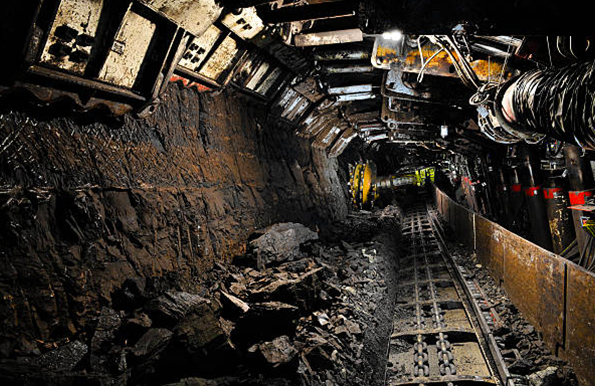
The longwall plow is a key piece of equipment used in longwall mining. This machine moves along the wall, cutting and extracting resources from the surface. The material then falls into a conveyor belt just beneath the wall, where it will be transported to the next mining operation stage.
The conveyor belt is another significant piece of longwall mining equipment. This belt transports extracted minerals from the mining site to the material handling or processing facility. The conveyor belt is an integral part of the mining process because it allows materials to be moved efficiently to the next step of the mining process.
Roof Supports
Roof supports are also an essential part of longwall mining equipment. These supports keep the mine from collapsing during the mining process. Longwall miners typically utilize roof bolters, which drill through the mine roof and then insert bolts to secure it.
Shields
Longwall mining uses shields to protect employees from falling debris and to maintain the mine roof as the plow cuts through the wall. They are usually made of steel and can be hundreds of feet long.
Shearer
The shearer is the primary cutting machine used in longwall mining. A huge machine cuts and takes the material from the wall. The shearer cuts and extracts material as it moves along the face of the wall. It is operated by a human and can cut several feet of material in a single pass.
Furthermore, Longwall mining equipment is a highly complex and specialized type of underground mining equipment. These pieces of equipment are meant to work together to extract coal and other minerals from the earth safely and effectively. They are used in various underground mining activities and are regarded as some of the world’s most modern and efficient equipment.
Mining Safety Equipment
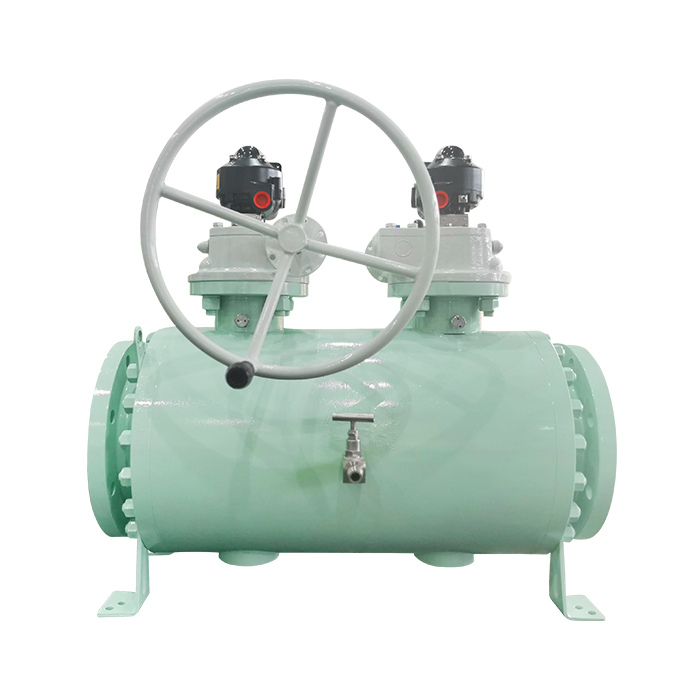
Personal Protective Equipment (PPE) for miners is critical to underground mining safety equipment for safety while working. Hard hats, safety glasses, earplugs, respirators, and protective clothes are examples of this equipment.
These things aim to keep miners safe from falling debris, airborne particles, and noise. Miners, for example, are protected from falling debris and head injuries by hard hats, while safety glasses and goggles shield their eyes from dust and flying debris.
Miners use earplugs and earmuffs to protect their ears from the harsh noises prevalent in mining operations. Dust masks and air-purifying respirators, for example, are used to protect miners from inhaling dangerous dust and particles.
Miners wear protective equipment, such as fire-resistant clothing, to protect them from heat, fire, and other threats. Miner tools, such as pickaxes and chisels, are also essential for miners’ safety.
These instruments break up rock and ore to recover mineral resources. They are built to last and resist heavy use in tough mining environments.
Surface and underground mining equipment are also important for miners’ safety. These machines are meant to be efficient and reliable for extracting mineral resources.
Among them are large machines such as blast-hole drills, bucket-wheel excavators, dragline excavators, and mining trucks. They’re used to extract various minerals and resources, including coal, gold, silver, iron ore, copper, and other precious metals.
Underground Mining Equipment Market
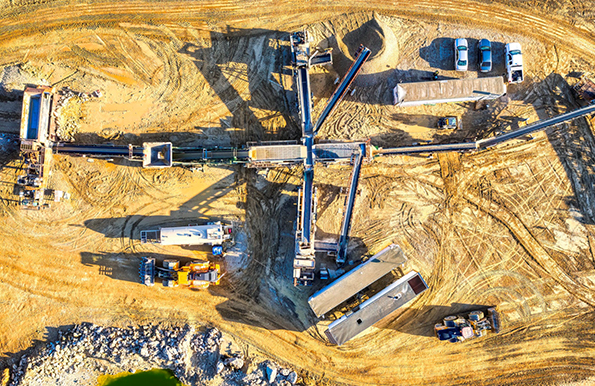
The market for mining equipment is expected to increase gradually over the next few years due to the increasing demand for mineral resources and the need to replace older equipment. Between 2021 and 2025, it is anticipated that the market will expand at a compound annual growth rate (CAGR) of more than 2%.
The number of mining machines in Oceania, Africa, and the Middle East is anticipated to expand the most as a result of both new purchases brought about by new mines beginning production and replacements. It is anticipated that South and Central America, along with North America, will follow in the footsteps of these two regions.
One of the key forces propelling growth in the underground mining equipment industry is the ever-increasing need for various natural resources. Demand for resources such as coal, gold, silver, iron ore, copper, and other precious metals is driven by the growth of the world’s population, urbanization, and industrialization.
As miners seek improved productivity, reduced emissions, and lower ventilation costs, the number of electric mining trucks and loaders/LHDs is expected to grow. Electric mining trucks and loaders/LHDs are equipped with electric motors that are more energy-efficient and produce fewer emissions than traditional diesel engines.
It is expected to drive the adoption of electric mining trucks and loaders/LHDs in the underground mining equipment market. The report also gives an insight into the key OEMs in each segment and region.
Major players in the underground mining equipment market are expected to continue to dominate the market, thanks to their strong brand recognition and reputation for quality products. Additionally, butterfly valve suppliers could benefit from the growth in this market as the valves are widely used in the mining industry for controlling fluid flow.
Choose Right Mining Equipment to Reduce Safety Challenges in Underground Mines
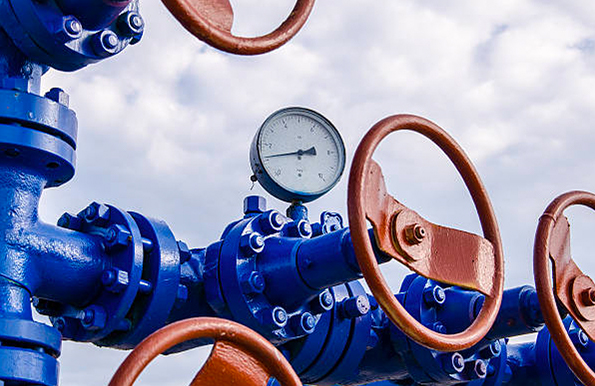
Mining is a dangerous and complex industry that requires specialized equipment to extract minerals and resources from the earth. In underground mining, safety is a major concern, and choosing the right equipment can significantly reduce safety challenges.
One of the essential pieces of equipment used in underground mining is the mining truck. These large, heavy-duty vehicles are used to transport extracted materials from the mining site, and they must withstand the harsh conditions of underground mines.
Choosing a mining truck with safety in mind, such as those with reinforced cabins and rollover protection, can help reduce the risk of accidents and injuries. Another essential piece of equipment used in underground mining is the longwall mining machine.
These machines extract coal from the earth’s surface and can be dangerous if not operated properly. Choosing a longwall mining machine that is designed with safety features, such as automatic shut-off systems and remote control capabilities, can help reduce the risk of accidents and injuries.
In addition to mining equipment, industrial valves play an essential role in underground mining. Industrial valves are used to control the flow of gases and other materials in underground mines, and they must be able to withstand the harsh conditions of underground mines.
Choosing industrial valves designed with safety in mind, such as those with reinforced bodies and explosion-proof designs, can help reduce the risk of accidents and injuries. Choosing the right mining equipment and industrial valves is critical for reducing safety challenges in underground mines.
By selecting equipment designed with safety in mind, miners can help reduce the risk of accidents and injuries and improve the overall safety of the mining industry.
Conclusion
When it comes to underground mining, having the appropriate equipment is necessary to ensure the mine’s safety and output levels. The term “equipment” can refer to various tools and machinery in underground mining, such as drilling equipment, haulage equipment, and ventilation systems.
It is essential to select suitable mining equipment for a particular mining activity to minimize potential safety hazards and optimize operational effectiveness. In underground mining, valves are essential in regulating and managing the flow of various fluids.
In addition, they are utilized to control the temperature and pressure of the medium. Choosing suitable valves for the particular mining operation and media is essential to keep operations safe and efficient.
Valve manufacturer Dombor offers a wide variety of industrial valves that have been developed especially to meet the requirements of the mining sector. The company’s comprehensive quality control system and their ability to provide personalized solutions.
The organization can guarantee the valves are resistant to corrosive substances and high temperatures and pressures. Dombor may assist customers in meeting their business objectives by providing a one-stop shop for all valve requirements, requiring the least effort on customer’s part and the least amount of time and money.









